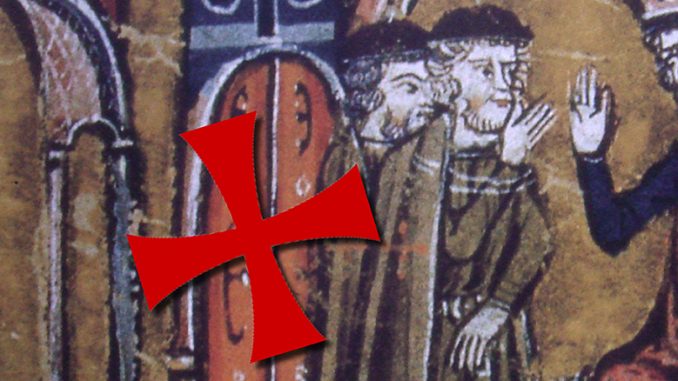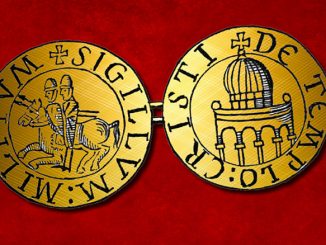
In the two centuries of its formal existence, the Order of the Knights Templar served under 23 Grand Masters. Among these notable leaders, Grand Master Jacques de Molay is particularly renowned, alongside the Order’s founder, Hugues de Payens
Historically, it is believed that Hugues de Payens and Geoffrey de St. Omer approached King Baldwin II’s palace with the intent to defend Christian pilgrims against infidel attacks. However, recent evidence suggests that de Payens may have already been in the Holy Land, possibly serving in Godfrey de Bouillon’s army during the First Crusade.
According to John J. Robinson’s book, “Dungeon, Fire, and Sword,” de Payens became the first Grand Master of the Order at the age of 48, having spent 22 years in the Levant. Archbishop William of Tyre, an early chronicler of the Order, described its formation, mentioning that de Payens and Godfrey de St. Omer, among other noble knights, pledged themselves to a life of poverty, chastity, and obedience in the service of God. King Baldwin II granted them temporary residence in his palace, near the Temple of the Lord.
Although little is known about de Payens’ youth, it is known that he was a knight from Champagne in Burgundy. His lord, Hugh Count of Champagne, granted lands to the young Bernard of Fontaines (later Saint Bernard) for the construction of Clairvaux Abbey, and later joined the Order himself.
Traditionally, it is believed that the Order began with nine knights who took vows before the Patriarch of Jerusalem. However, historical accounts sometimes mention eight members. Alongside de Payens and de St. Omer were Payen de Montdidier, Archambaud de St. Agnan, Andre de Montbard, Geoffrey Bisol, and two knights recorded only by their Christian names, Rossal and Gondemar. The identity of the ninth member remains unknown, though some suggest it may have been Hugh Count of Champagne.
Of particular importance among the additional knights was Andre de Montbard, who was actually the uncle of Bernard of Clairvaux, despite being younger. De Montbard later became Grand Master of the Order. The inclusion of de Montbard and the Count of Champagne suggests a deeper connection within the Order, possibly beyond mere coincidence.
It is said that de Payens and his companions did not accept new members for the first nine years. Various theories exist regarding the reasons for this, ranging from the search for the Holy Grail to the alleged discovery of Christ’s severed head. However, Desmond Seward, in his book “The Monks of War,” proposes a simpler explanation: the Order was on the verge of dissolution due to a lack of members, and de Payens sought Bernard’s support to save it.
Whether this theory holds true or not, what remains certain is that de Payens and his associates returned to Europe from the Levant to seek funds and recruits. At the Council of Troyes on January 13, 1129, the Templars received a Rule of Order, partly written by Bernard of Clairvaux himself. Bernard’s letter of exhortation further propelled the Order to fame and fortune.
Hugues de Payens guided the Order for nearly 20 years until his death in 1136. Historian Charles Addison, in his book “Knights Templars,” describes de Payens’ life and achievements in glowing terms, emphasizing his pivotal role in establishing the great monastic and military institution of the Temple.
As Addison highlights, de Payens returned to Palestine, leading a valiant group of newly elected Templars from France and England. They received a warm welcome from the king, clergy, and barons of the Latin kingdom. After governing the Order for 21 years and witnessing its rise to prominence under his care and the unwavering support of St. Bernard, de Payens passed away in 1139. Throughout his life, de Payens remained an honorable figure, praised by the noble and just. Despite attempts by later writers to tarnish his reputation, there is little doubt that de Payens lived and died without reproach, leaving behind an admirable legacy.
About Us
TemplarHistory.com was started in the fall of 1997 by Stephen Dafoe, a Canadian author who has written several books on the Templars and related subjects.
Read more from our Templar History Archives – Templar History



